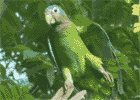For the introduction to this page and to Catadupa's frogs in general, click here.
| CATADUPA FROG DISTRIBUTIONS | ||||
| Checklist nomenclature follows Blair Hedges'
CaribHerp website.
Thanks also to Dr. Hedges for confirming the identification of Osteopilus marianae. Island distribution maps are from Schwartz and Henderson (1991). Click on "Catadupa Occurrence" maps to view larger image of each species' distribution and "Calling Vigor Index" created from acoustic monitoring surveys. |
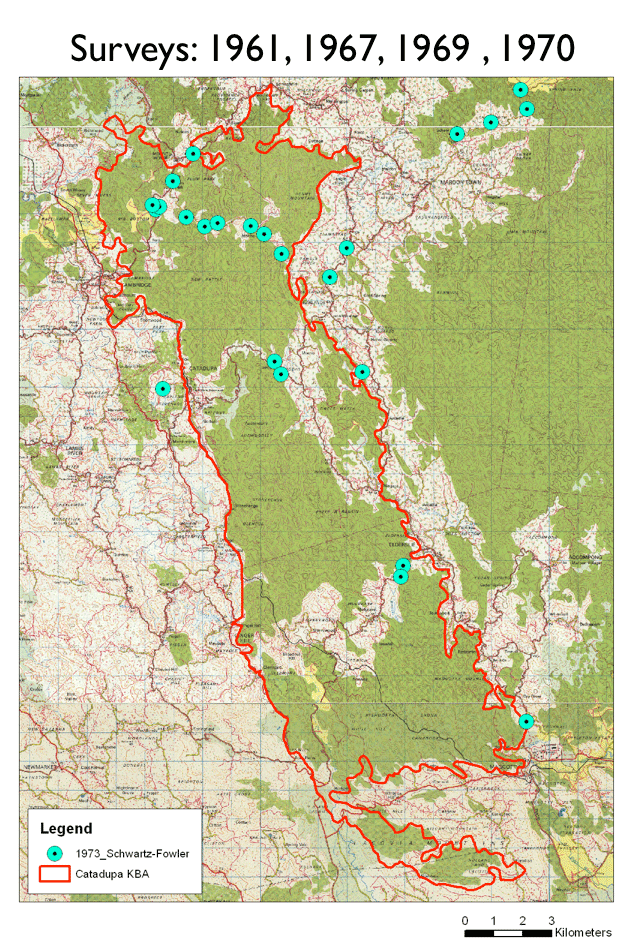 |
To see the locations of historic 1960s surveys and current survey locations, click on the map to enlarge. | ||
| COMMON NAME | SCIENTIFIC NAME | ISLAND DISTRIBUTION | 2014 CATADUPA OCCURRENCE (click on map to view larger) |
COMMENTS |
| Bufonidae | ||||
| Cane Toad | Rhinella marina | Islandwide | This introduced invasive alien was present in the KBA but not systematically suveyed | |
| Hylidae | ||||
| Jamaican Snoring Treefrog | Osteopilus crucialis | 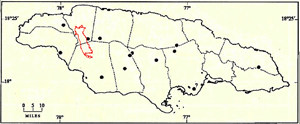 |
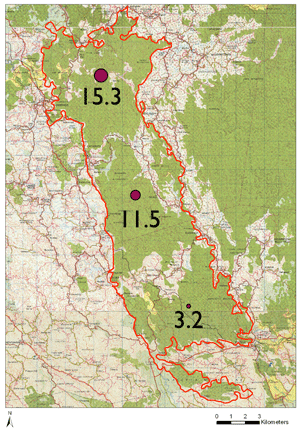 |
Throughout the KBA; common in forest |
| Jamaican Laughing Treefrog | Osteopilus ocellatus formerly O. brunneus |
 |
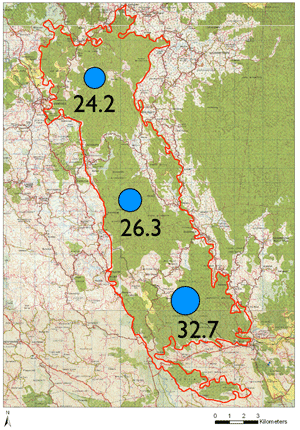 |
Throughout the KBA; very common in forest |
| Jamaican Yellow Treefrog | Osteopilus marianae | 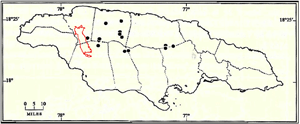 |
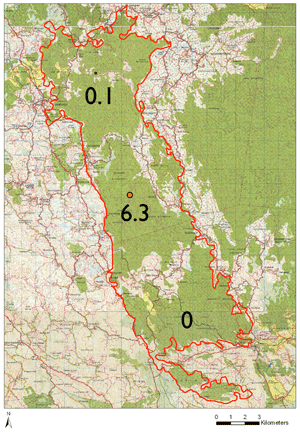 |
Detected almost only in the high rainfall, more mature forest of Central Catadupa |
| Jamaican Green Treefrog | Osteopilus wilderi | 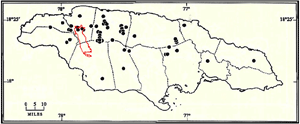 |
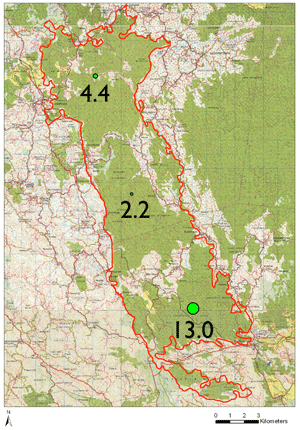 |
Throughout the KBA; fairly common in forest |
| Eleutherodactylidae | ||||
| Jamaican Rock Eleuth | Eleutherodactylus cundalli | 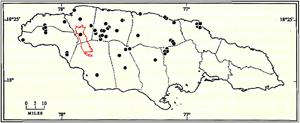 |
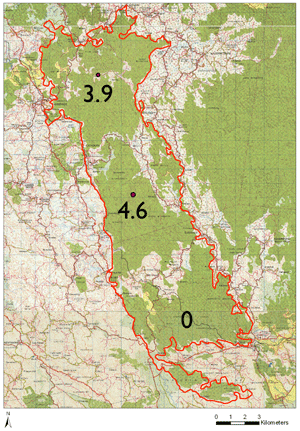 |
Most common in the central, high rainfall region of the KBA; noticeably not detected in the south |
| Jamaican Earspot Frog | Eleutherodactylus fuscus | 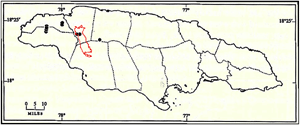 |
 |
Throughout the KBA; commonly detected in the forest |
| Jamaican Forest Frog | Eleutherodactylus gossei | 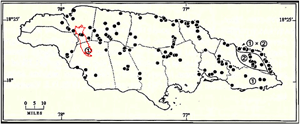 |
 |
Throughout the KBA; most robust calling in the slightly drier south |
| Jamaican Pallid Frog | Eleutherodactylus grabhami |  |
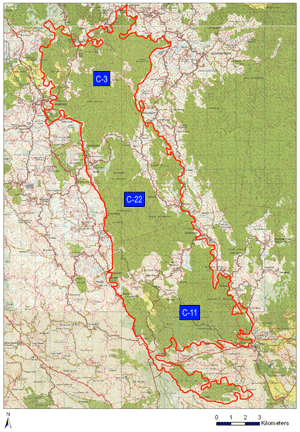 |
Throughout the KBA based on capture for chytrid sampling; not detected acoustically |
| Cockpit Frog | Eleutherodactylus griphus |  |
 |
Not detected acoustically but was reported as present during chytrid sampling; species identity not definitively confirmed.
Re-survey required |
| Jamaican Bromeliad Frog | Eleutherodactylus jamaicensis | 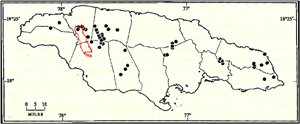 |
SPECIES NOT DETECTED ACOUSTICALLY NOR DURING CHYTRID SAMPLING: Alert raised for chytrid risk. Click for more info. | |
| Lesser Antillean Frog | Eleutherodactylus johnstonei |  |
This introduced invasive alien was present but not systematically suveyed | |
| Jamaican Masked Frog | Eleutherodactylus luteolus | 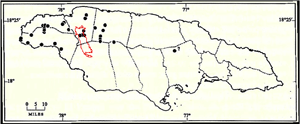 |
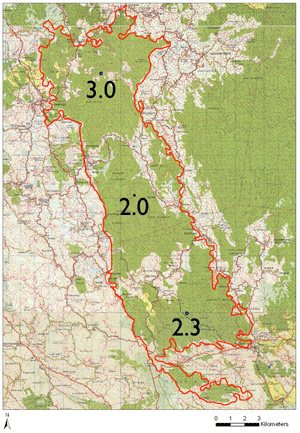 |
Throughout the KBA but not commonly detected acoustically |
| Jamaican Yellow-bellied Frog | Eleutherodactylus pantoni | 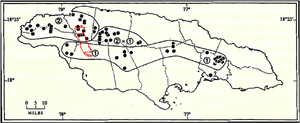 |
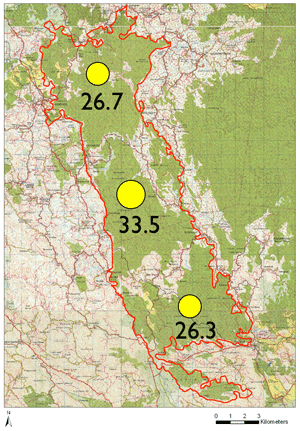 |
Throughout the KBA, very common |
| Cuban Flathead Frog | Eleutherodactylus planirostris |  |
This introduced invasive alien was present but not systematically suveyed | |
| Calling Vigor Indices* - All Confirmed Species
NOTE: The detection distance of each species is highly variable, ranging from > 100 m for Osteopilus crucialis to mere meters for Eleutherodactylus luteolus. This map should NOT be viewed as the relative abundance amongst species, but rather to compare the geographic patterns of EACH species and to highlight the numbers of species along the North-Central-South gradient. *Circles represent CVI scores from acoustic recordings; rectangle is for species which was not detected acoustically, but was handled for chytrid testing. |
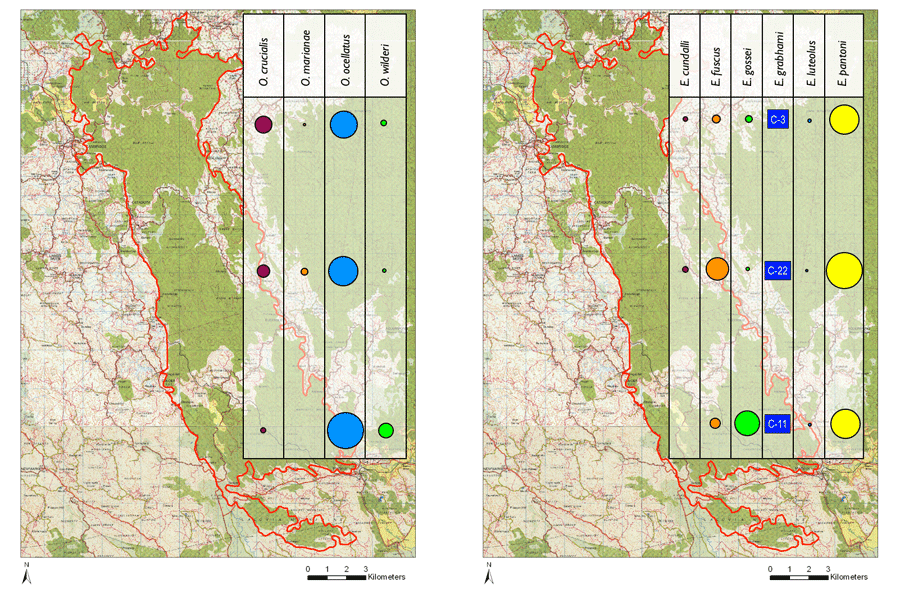
|
Acknowledgements:
Funding for Catadupa frog surveys and creation of distribution maps was provided by:
 |
References
Crombie, R.I. 1986. Another new forest-dwelling frog (Leptodactylidae: Eleutherodactylus) from the Cockpit Country of Jamaica. Transactions of the San Diego Society of Natural History 21: 145-153.
Hedges, S. B. 1987. Vocalization and habitat preference of the Jamaican treefrog, Hyla marianae (Anura, Hylidae). Carib. J. Sci. 23:380-384. http://www.hedgeslab.org/pubs/10.pdf
Hedges, S. B. 1999. Caribherp: Amphibians and reptiles of Caribbean Islands.www.caribherp.org on-line database. Date accessed: 1st December 2015.
Schwartz, A. and D.C. Fowler. 1973. The Anura of Jamaica: A Progress Report. Study of the Fauna of Curacao and Other Caribbean Islands: No. 142, pp 50-142. http://www.repository.naturalis.nl/document/549921
Schwartz, A. and R. W. Henderson. 1991. Amphibians and reptiles of the West Indies: Descriptions, distributions, and natural history. University of Florida Press, Gainesville, Florida.
Ward, C. 2014. Industry threatening to eliminate endemic Jamaican frogs. FrogLog (Issue no. 109) vol. 22: 48-49.

